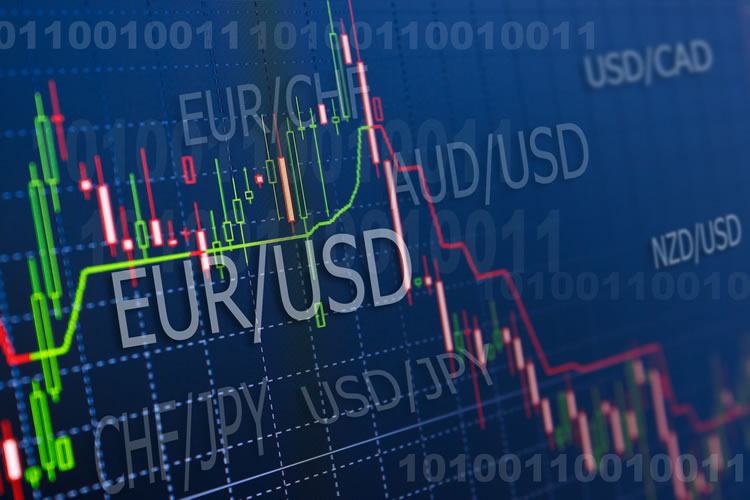On July 21, 2018, an introductory article was published about trading the foreign exchange market (Forex, or FX). That article can be found here: Introduction to Forex
Today we will continue this educational series with a bit of information to help those unfamiliar with the Forex market understand how the pricing works, as well as touch on the difference between currency futures and Spot Forex.
How does the pricing work in the Forex market?
Currency trading is performed in pairs. The currency pair is composed of a base currency and a quoted currency. The quoted currency is sometimes mentioned as the “counter currency”. Many times the base currencies which are traded are the EUR (Euros), the USD (US Dollars), the GBP (British Pounds),and the AUD (Australian Dollar).
An example of a currency quote is as follows:
EUR/USD 1.1600
The EUR is the base currency and the USD is the quoted currency or counter currency. When looking at this quote, the Euro has a value or worth of 1.16 US Dollars.
Any currency can be the base currency. It could be the EUR, the USD, the GBP, or any of the other currencies. The base currency is always equal to 1. The quoted value of 1.1600 indicates it would take 1.1600 USD (US Dollars) to equal 1 EUR (Euro).
Most currencies extend out to 4 decimal points. A pip is the smallest measurement of a forex trade. The term “Pip” is the abbreviation for point in percentage.
Using the USD as the base currency, the quote would look like this:
USD/EUR .8621
This indicates 1 USD is equal to .8621 EUR. When you divide 1 by .8621 you get approximately 1.16. Do you see how the two quotes have the same relationship in value?
A little bit about Ask and Bid Prices….
Forex pricing is similar to most financial markets. When you trade a currency pair, there is a bid price and an ask price. The bid and ask prices are in relation to the base currency. The bid price is the price at which a trader is able to sell a currency pair. The Ask price, also referred to as the “Offer”, is the price at which a trader is able to buy a currency pair.
Below is an example of a price quote on the USD/EUR currency pair showing the bid and ask prices:
EUR/USD = 1.1600/05
Bid = 1.1600
Ask = 1.1605
In this example, the bid is 1.1600 and the ask is 1.1605. Usually, the difference between the bid and ask is a small fraction … less than 1/100th of a unit of the currency. Therefore, many times the last two digits after the slash in the price quote for the bid and ask are shown. For instance, the EUR/USD 1.1600/05.
Showing the bid and ask a different way would look like this:
EUR/USD = 1.1600/1.1605 (1.1600 is the bid 1.1605 is the ask)
What about Spreads?
The mathematical difference between the Bid price and the Ask price is called the spread. Using the EUR/USD price quote of 1.1600/05, the spread would be .0005 or 5 “pips”. When referring to the Euro, U.S. Dollar, British Pound, or Swiss Franc, one pip would be equal to .0001. Because the Japanese Yen is quoted to two decimal places, one pip would be .01.
While changes in the spread may seem to be negligible to some, even the smallest change in pips can result in thousands of dollars being lost, or made, due to leverage. Those unfamiliar with leverage may want to refer to the original introductory Forex article (link provided above) for details on the impact leverage can have on those trading the Forex. Leverage is also one of the main reasons that many find trading the Forex so attractive.
The majority of currencies trade within a range of 100 to 200 pips each day.
What influences prices in the Forex market?
Forex markets and the prices of currencies are mainly influenced by the flow of international trade and investment. It is also influenced by, but to a lesser degree, many of the same factors that affect pricing in the equity and bond markets. These may include political stability (or instability), economic conditions, interest, and inflation. These factors may have a longer term effect for traders of equities and bonds. Quite often it is the immediate reaction to such occurrences that causes volatility this is another reason that many day traders find trading the Forex market so appealing.
How do Currency Futures and Spot Forex compare?
Traders have a choice of trading currency futures, as well as the spot Forex market. The difference between the two is not significant, but it’s worth being aware of them.
A currency futures contract is a contract that is legally binding, and obligates the buyer and seller to trade a particular amount of a currency at a specified price. This price is the published exchange rate. The transaction would occur at some point in the future, which is the settlement date.
The spot market in forex is the place where currencies are bought and sold at the current price. With the spot forex rate, the underlying currencies are physically exchanged following the settlement date. Generally speaking, the spot market involves the actual exchange of the underlying asset. Have you ever gone to a bank to exchange one currency for another? If you have, you have taken part in the forex spot market.
One of the main distinctions between currency futures and spot Forex is when the trading price is determined, as well as when the physical exchange of the currency occurs. With currency futures, the price is set on the signing of the contract and the currency pair is exchanged on the delivery date which is some point in the future.
With spot Forex, the price is also determined at the point the trade is made, but the physical exchange of the currency pair takes place at the same point the trade is made, or within a short amount of time thereafter.
Currency futures are based on the currency spot rate. Because of this, currency futures prices tend to change as the spot rates change.
If the spot rate of a currency pair increases, the futures price of a currency will likely increase. Also, if the spot rate of a currency pair goes down, the futures price has a good probability of decreasing. However, this is not always the case. Sometimes the spot rate will change, but futures with a longer-term expiration may not. Why? The spot rate move may be viewed as short term, and unlikely to affect long-term prices.
Most traders in the currency futures market are speculators and usually will close their positions before the settlement date.
To summarize Forex pricing:
• The first currency listed in a quote is the base currency
• The Bid price is used when selling currencies
• The Ask price is used when buying currencies
• The difference between the Bid and Ask prices is called the spread
• The spread is called a pip, or point
• The pricing on both currency futures and the spot Forex market is determined at the point the trade is entered, but delivery date of the currency pair differs.
In a future article we will talk in a bit more detail about understanding the risks of trading the foreign currency market.
If you have anything you would like to share regarding Forex pricing or currency futures versus spot Forex, feel free to comment below.
Are you new to trading looking for mentoring, or an educational alert service? Or are you a veteran seeking a trading group where you can interact with like-minded traders who share their experiences? Look no more. Join Aeromir today!


